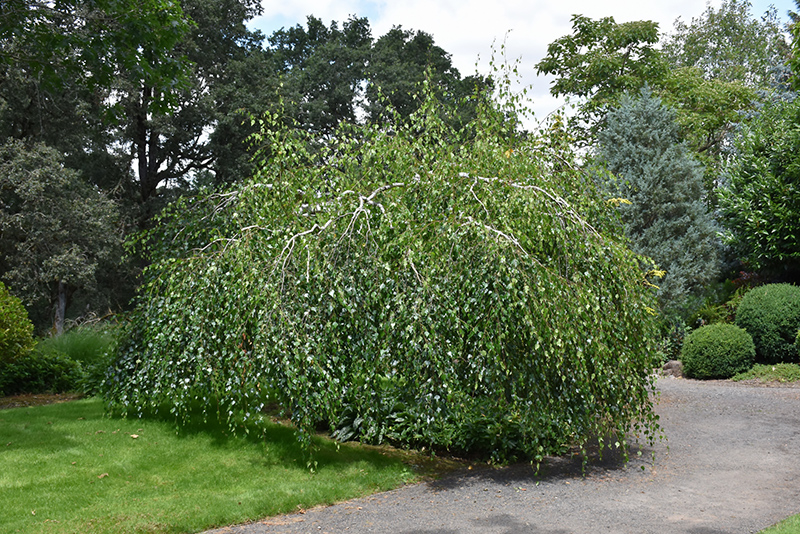Young's Weeping Birch
Betula pendula 'Youngii'
Height: 12 feet
Spread: 8 feet
Sunlight:
![]()
![]()
Hardiness Zone: 2
Other Names: Silver Birch, Common Birch
Description:
A truly distinctive plant, featuring a contorted, weeping growth habit; not for every landscape or person but putty in the hands of a creative garden designer, a very noticeable plant which can quickly outgrow a garden planting, often used as a solitary
Ornamental Features
Young's Weeping Birch is primarily valued in the landscape or garden for its highly ornamental weeping form. It has dark green deciduous foliage. The pointy leaves turn an outstanding yellow in the fall.
Landscape Attributes
Young's Weeping Birch is a multi-stemmed deciduous shrub with a rounded form and gracefully weeping branches. Its relatively fine texture sets it apart from other landscape plants with less refined foliage.
This shrub will require occasional maintenance and upkeep, and should only be pruned in summer after the leaves have fully developed, as it may 'bleed' sap if pruned in late winter or early spring. Gardeners should be aware of the following characteristic(s) that may warrant special consideration;
- Insects
Young's Weeping Birch is recommended for the following landscape applications;
- Accent
- General Garden Use
Planting & Growing
Young's Weeping Birch will grow to be about 12 feet tall at maturity, with a spread of 8 feet. It has a low canopy with a typical clearance of 1 foot from the ground, and is suitable for planting under power lines. It grows at a fast rate, and under ideal conditions can be expected to live for approximately 30 years.
This shrub does best in full sun to partial shade. It prefers to grow in average to moist conditions, and shouldn't be allowed to dry out. It is not particular as to soil type or pH. It is somewhat tolerant of urban pollution. Consider applying a thick mulch around the root zone in winter to protect it in exposed locations or colder microclimates. This is a selected variety of a species not originally from North America.
Disclaimer - This Plant Finder tool is an online resource representing many of the varieties that we carry over the course of the season, and is intended for informational purposes only. Inventory varies seasonally, so we cannot guarantee that every plant will be in stock at all times - please contact the store directly for current availability. It does not include our entire selection of plants, so be sure to visit our store to see varieties that may not be represented on this list.


